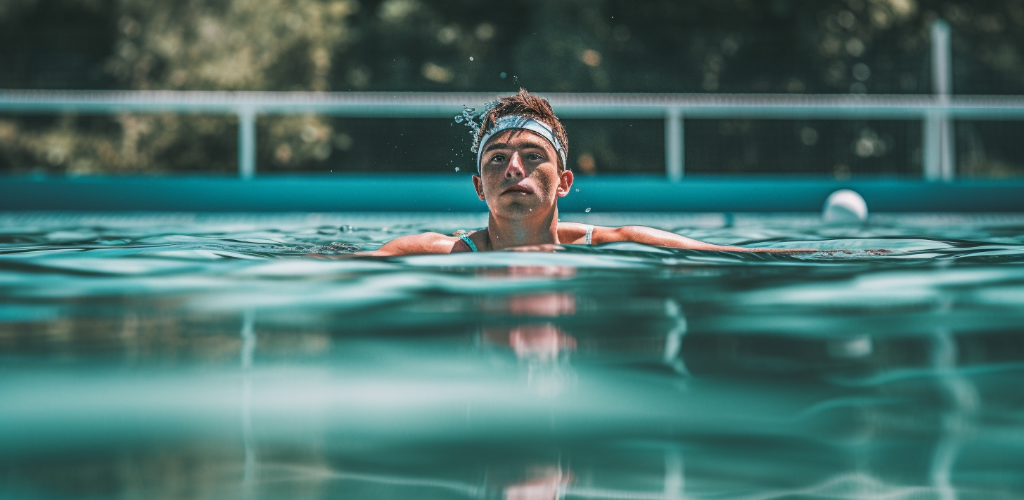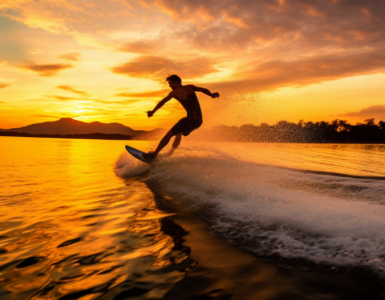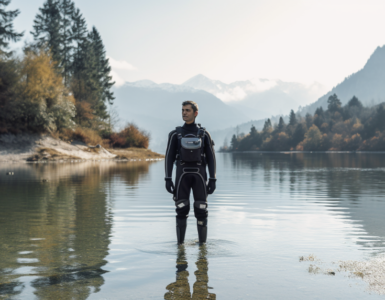Did you know that approximately 4 billion people worldwide can’t swim? It’s a surprisingly high number, considering the numerous benefits that swimming offers. One of the reasons behind this statistic is the perceived difficulty and time required to learn to swim. The reality, however, is that learning to swim can be a relatively quick and enjoyable process, depending on several factors. These include age, physical fitness, and frequency of practice. Let’s dive into the fascinating journey of learning to swim!
Why Learning to Swim is Important
Learning to swim offers a plethora of benefits that go beyond just having fun in the water. First and foremost, knowing how to swim can be a lifesaver—quite literally. It equips you with essential skills to stay safe in and around water bodies. Beyond safety, swimming is an excellent form of low-impact, full-body exercise. It strengthens your heart, improves lung capacity, and tones muscles all at once. And let’s not forget the joy of being able to participate in a range of water sports and activities. Can you imagine the exhilaration of surfing a wave, exploring a coral reef, or just splashing around in a pool on a hot summer day?
General Timeline for Learning to Swim
So, how long does it take to learn to swim? The answer isn’t quite as straightforward as you might think. The timeline can vary greatly depending on several factors. For instance, children often learn faster than adults due to their fearless nature and flexible bodies. Similarly, those who are physically fit may find it easier to adapt to swimming, given the physical demands of the sport. And of course, the more frequently you practice, the faster you’ll improve. While it’s difficult to provide an exact timeline without considering these factors, most people can learn basic swimming skills in anywhere from a few weeks to several months of regular lessons and practice.
Factors Influencing How Long it Takes to Learn to Swim
Learning to swim is a unique journey for everyone, with a variety of factors influencing the duration of the process. Let’s dive into some of the most significant ones.
Age
Ever noticed how easily children seem to pick up new skills? This applies to swimming as well. Younger individuals often learn to swim faster than adults. Why is this so, you might wonder? Well, children generally have less fear and more flexibility, which can make the learning process quicker and more enjoyable. However, this doesn’t mean adults can’t learn to swim. It might take a bit more time and patience, but with consistent practice, adults can become proficient swimmers too.
Physical Fitness
Physical fitness plays a significant role in how quickly you can learn to swim. Swimming engages various muscle groups, requiring a good level of strength and endurance. Being physically fit doesn’t just make the process easier but also safer. However, don’t let your current fitness level discourage you. Swimming itself is a fantastic way to get in shape, and you’ll likely see improvements in your fitness as you learn.
Frequency of Lessons and Practice
Think about it: how can you expect to learn anything without practice? Just like learning to play an instrument or a new language, learning to swim requires regular lessons and practice sessions. The more often you swim, the quicker you’ll learn. It’s all about building muscle memory and gaining confidence in the water.
Learning Styles and Their Impact on Swimming Lessons
We all have different ways of learning, right? Some people are visual learners, while others learn best by listening or doing. Understanding your learning style can significantly influence how quickly you pick up swimming.
Visual learners might benefit from demonstrations and watching others swim. Auditory learners may find it helpful to have instructions and feedback spoken to them. Kinesthetic learners, on the other hand, will likely learn fastest by getting in the water and physically practicing the movements.
Recognizing your learning style and communicating it to your instructor can help tailor the lessons to your needs, potentially speeding up your learning process. Exciting, isn’t it?
Different Stages of Swimming Lessons
Learning to swim is a journey that involves several stages. It’s not just about jumping into the water and starting to move your arms and legs. There’s a process, a method to the madness, if you will. Let’s take a look at this process, shall we?
Firstly, it’s about getting comfortable in the water. This is crucial as it sets the foundation for everything else that follows. This stage involves learning to float, blow bubbles, and generally just getting used to the feel of the water.
Next, come the basic swimming skills. This is where you learn to kick and paddle, move forward in the water, and start to get a feel for how to move efficiently. These skills form the basis of all swimming strokes.
After mastering the basics, it’s time to start learning the different strokes. Each stroke has its own technique and rhythm, and mastering them takes time and practice. This stage is often the longest and most challenging, but also the most rewarding.
Finally, once you’ve got a good grasp on the different strokes, the final stage involves learning to tread water and dive. These skills are not only fun but are also essential for safety in deeper water.
– Key steps involved in learning to swim
- Getting comfortable in the water
- Learning basic swimming skills
- Mastering different strokes
- Learning to tread water and dive
Tips to Speed Up the Learning Process
Now that we’ve covered the stages of swimming lessons, let’s talk about some tips that can help speed up the learning process. Because, let’s face it, we all want to get better, faster, right?
First and foremost, practice regularly. It might sound obvious, but the more you swim, the better you’ll get. Regular practice helps to reinforce what you’ve learned and build muscle memory.
Secondly, focus on your technique. It’s not just about moving your arms and legs as fast as you can. Good technique is essential for efficient and effective swimming. So, take the time to learn and practice the correct form for each stroke.
Lastly, don’t be afraid to use flotation devices initially. They can provide a sense of security and allow you to focus on your technique without worrying about staying afloat.
Remember, the goal is not to become an Olympic swimmer overnight (unless that’s your dream, of course!). It’s about enjoying the process and gradually improving your skills. So, take your time, be patient with yourself, and most importantly, have fun!
Understanding the Challenges in Learning to Swim
Swimming can indeed be a challenge to learn, especially for adults. It’s not just about moving your arms and legs in a particular way; there’s also the aspect of breath control, overcoming fear of water, and maintaining balance. But guess what? Every swimmer, even the most proficient ones, have had to face these challenges at some point. Let’s take a look at these hurdles and how to surpass them.
One of the most common issues is the fear of water. Some people have a natural apprehension about being in a large body of water, especially when they can’t touch the bottom. Overcoming this fear requires patience, practice, and sometimes professional help. Swimming in shallow water and gradually moving to deeper sections can help alleviate this fear.
Another common challenge is breath control. It’s a skill that takes time to master. Practicing breathing exercises and techniques, both in and out of the water, can significantly improve this aspect of swimming.
Then there’s the coordination of movements. Swimming requires a certain rhythm and coordination between your arms, legs, and breathing. It may seem overwhelming at first, but with consistent practice, it becomes second nature.
Concluding Thoughts on the Swimming Journey
Learning to swim is a journey that varies for everyone. Some might pick it up quickly while others may need more time. The key is to remember that it’s not a race. The ultimate goal should be to swim safely and enjoy the water. So, take your time, be patient, and celebrate your progress, no matter how small.
Swimming not only offers a way to stay fit and healthy, but it also opens up a world of enjoyable activities like snorkeling, scuba diving, and water polo. And let’s not forget the simple pleasure of a refreshing dip in the pool on a hot day. So, are you ready to dive into your swimming journey?
| Factors Affecting Learning Speed | Stages of Swimming Lessons |
|---|---|
| Age | Getting comfortable in the water |
| Physical Fitness | Learning to float |
| Frequency of Lessons and Practice | Mastering basic strokes |
| Learning Styles | Improving technique and endurance |
Remember, the benefits of learning to swim far outweigh the challenges. It’s a life skill that offers safety, health benefits, and a whole lot of fun. So, don’t let the challenges deter you. Happy swimming!




